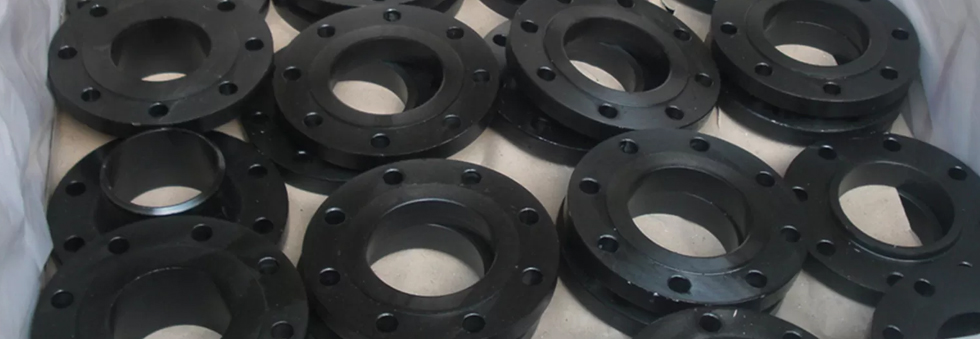Introduction to ASTM A105 Carbon Steel Flanges: Key Properties and Applications

In the world of piping systems, ASTM A105 carbon steel flanges play a critical role in ensuring the secure and efficient connection of pipes, valves, pumps, and other equipment. These flanges are widely used in industries ranging from oil and gas to water treatment due to their strength, durability, and cost-effectiveness. If you’re looking to understand more about ASTM A105 flanges, this guide will cover the essential properties, advantages, and applications that make them a popular choice in industrial projects.
What Are ASTM A105 Carbon Steel Flanges?
ASTM A105 is a specification set by the American Society for Testing and Materials (ASTM) for forged carbon steel piping components. This standard is primarily used for producing flanges, fittings, valves, and other similar components for ambient- and high-temperature service conditions.
ASTM A105 flanges are made from forged carbon steel and are known for their excellent mechanical properties. These flanges are used extensively in pressure systems where strength and durability are critical. They are particularly suitable for high-pressure and high-temperature applications.
Key Properties of ASTM A105 Carbon Steel Flanges
- High Strength and Durability: ASTM A105 flanges are designed to withstand high pressures and temperatures, making them ideal for demanding industrial environments. Their high tensile strength ensures reliable performance in harsh conditions.
- Temperature Resistance: ASTM A105 flanges are suitable for use in ambient to higher temperature services, up to around 450°C (842°F). This makes them versatile for many industrial applications, including steam and power generation systems.
- Weldability: One of the significant advantages of ASTM A105 carbon steel is its excellent weldability. This property allows for seamless integration with piping systems and simplifies the installation process.
- Cost-Effective: Compared to alloy and stainless steel flanges, ASTM A105 flanges are much more affordable. This makes them a great choice for large-scale projects where cost control is essential.
- Corrosion Resistance: Although carbon steel is less corrosion-resistant than stainless steel, A105 flanges can be coated or treated to improve their resistance in corrosive environments. Galvanization or applying protective coatings is a common practice.
Common Types of ASTM A105 Flanges
ASTM A105 flanges come in a variety of styles to suit different needs. The most common types include:
- Weld Neck Flanges (WN): Ideal for high-pressure applications and designed for long-term, secure connections.
- Slip-On Flanges (SO): Easier to install and often used in lower-pressure systems.
- Blind Flanges (BL): Used to close off the ends of piping systems or valve connections.
- Socket Weld Flanges (SW): Often used for smaller-sized, high-pressure piping systems.
- Threaded Flanges (TH): Suitable for systems that do not require welding.
Applications of ASTM A105 Carbon Steel Flanges
Thanks to their versatility and strength, ASTM A105 flanges are used in a wide variety of industries. Some of the most common applications include:
1. Oil and Gas Industry:
Pipelines transporting oil, gas, and petroleum products rely on ASTM A105 flanges to maintain secure and leak-free connections. These flanges are also used in refineries and processing plants where high pressure and temperature conditions are common.
2. Power Generation:
Power plants, especially those using steam systems, require flanges that can withstand high temperatures. ASTM A105 carbon steel flanges are ideal for connecting steam lines, boilers, and other critical equipment.
3. Chemical Processing:
In chemical processing plants, where piping systems often carry corrosive fluids at high pressures, ASTM A105 flanges are used for secure and reliable connections.
4. Water Treatment Plants:
The water treatment industry frequently uses ASTM A105 flanges in pipelines carrying water under pressure, ensuring durability and long service life.
5. Shipbuilding and Marine Applications:
ASTM A105 carbon steel flanges are used in marine environments, often in conjunction with protective coatings, for pipelines and equipment aboard ships and offshore platforms.
Why Choose ASTM A105 Carbon Steel Flanges?
If you’re involved in a project that demands high-strength, reliable flanges at a competitive price, ASTM A105 carbon steel flanges are an excellent choice. Their ability to withstand high pressures and temperatures, combined with their affordability, makes them a go-to option for many industries. Plus, the availability of different flange types allows for customization to meet the specific needs of your piping system.
ASTM A105 carbon steel flanges offer a balance of strength, durability, and cost-effectiveness that makes them suitable for a wide range of applications. Whether you’re working in the oil and gas industry, power generation, or chemical processing, ASTM A105 flanges provide a reliable solution for high-pressure and high-temperature environments. By understanding the key properties and applications of these flanges, you can make informed decisions for your next industrial project.